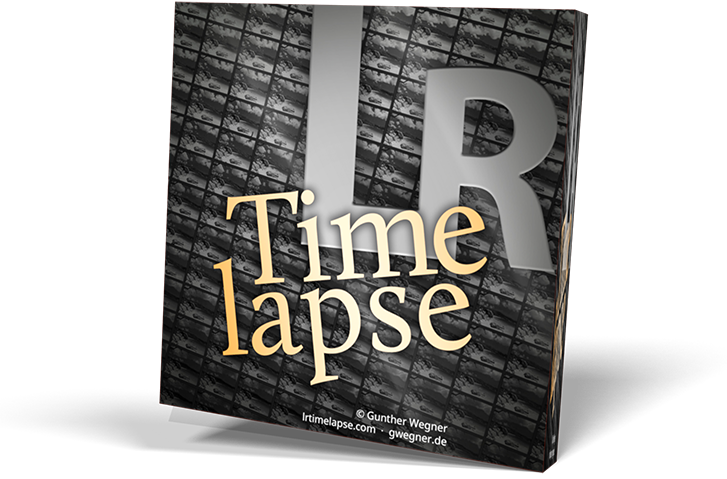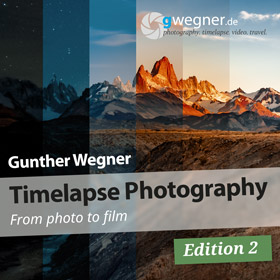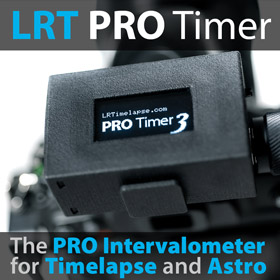Posts: 10
Threads: 4
Joined: Mar 2013
Hi Gunther,
First off great software, I absolutely love the results! I've only been using LRTimelapse for a little while but here is a thought...
I think you may be able to deskill part of the workflow or at least help people out a little...The most time consuming part of the process (excluding the final render) is undoubtedly the manual intervention in Lightroom, particularly if there are a lot of keyframes. There are essentially 2 problems with the intervention: it requires time and it also requires skill in matching exposures. Lightroom 4s match exposures doesn’t seem to be that great. For example, I will notice it making a -0.6 exposure adjustment when the camera settings would theoretically call for a 0.5 stop change etc. When I adjust the exposure to what the jump theoretically calls for (ie I adjust the exposure by -1 stop for a transition from 0.5 seconds to 1 second) it is often better than Lightroom's guess.
My suggestion is to get LRTimelapse to balance and transition all the exposures in the first part of the workflow. That wouldn’t actually prevent anyone from following the workflow as normal and using match total exposures/manual intervention if necessary, but on some sequences it might make smooth transitions straight away and avoid manual intervention or at least avoid the 'match total exposures' step since the user could do the tiny tweak straight away. All the user would then have to do is add their creative edits on top and synchonise everything except exposure. The transition could then be rerun for all the other effects. This is potentially a big time saver if my initial experiences with Lightrooms match total exposures are representative in general.Clearly the flaw with this process is that the user may wish to start by making all exposures 0.5 stops brighter for example, and that would make all the calculations that LRTimelapse does to correct the exposures redundant .
Perhaps an alternative 'Auto' workflow might be a good way to incorportate this feature. One click of a button could read all the files, transition the exposures and save the metadata so that for some holy grail sequences the result is perfect immediately.
I don’t have a huge amount of experience with the program (I have only been using it for a week) so I might be missing something, but maybe it's worth a thought to speed things up a little?
Alex
First off great software, I absolutely love the results! I've only been using LRTimelapse for a little while but here is a thought...
I think you may be able to deskill part of the workflow or at least help people out a little...The most time consuming part of the process (excluding the final render) is undoubtedly the manual intervention in Lightroom, particularly if there are a lot of keyframes. There are essentially 2 problems with the intervention: it requires time and it also requires skill in matching exposures. Lightroom 4s match exposures doesn’t seem to be that great. For example, I will notice it making a -0.6 exposure adjustment when the camera settings would theoretically call for a 0.5 stop change etc. When I adjust the exposure to what the jump theoretically calls for (ie I adjust the exposure by -1 stop for a transition from 0.5 seconds to 1 second) it is often better than Lightroom's guess.
My suggestion is to get LRTimelapse to balance and transition all the exposures in the first part of the workflow. That wouldn’t actually prevent anyone from following the workflow as normal and using match total exposures/manual intervention if necessary, but on some sequences it might make smooth transitions straight away and avoid manual intervention or at least avoid the 'match total exposures' step since the user could do the tiny tweak straight away. All the user would then have to do is add their creative edits on top and synchonise everything except exposure. The transition could then be rerun for all the other effects. This is potentially a big time saver if my initial experiences with Lightrooms match total exposures are representative in general.Clearly the flaw with this process is that the user may wish to start by making all exposures 0.5 stops brighter for example, and that would make all the calculations that LRTimelapse does to correct the exposures redundant .
Perhaps an alternative 'Auto' workflow might be a good way to incorportate this feature. One click of a button could read all the files, transition the exposures and save the metadata so that for some holy grail sequences the result is perfect immediately.
I don’t have a huge amount of experience with the program (I have only been using it for a week) so I might be missing something, but maybe it's worth a thought to speed things up a little?
Alex





